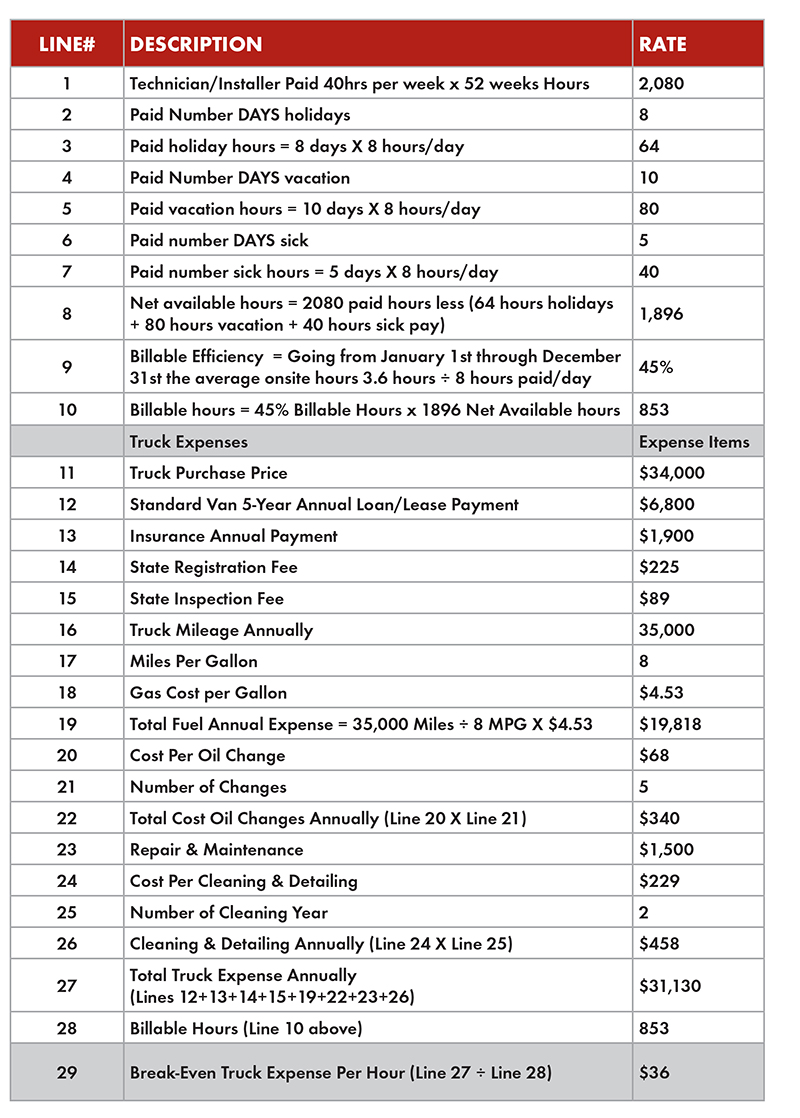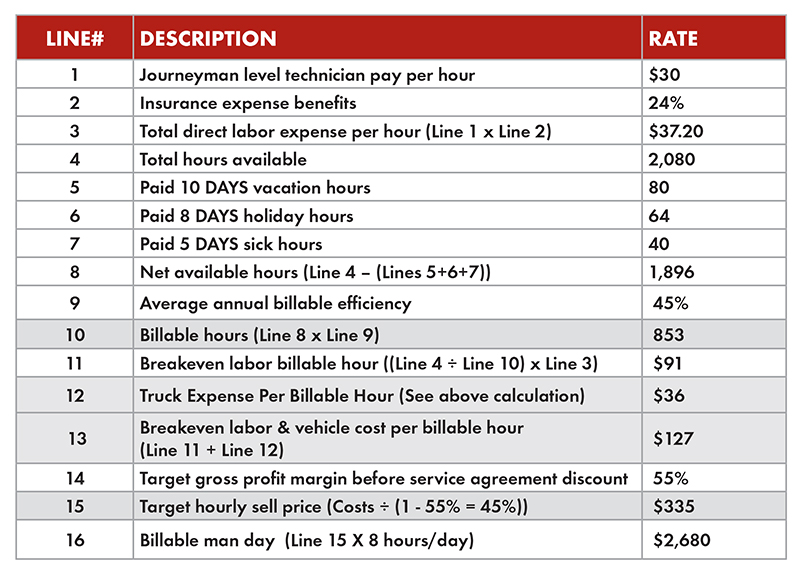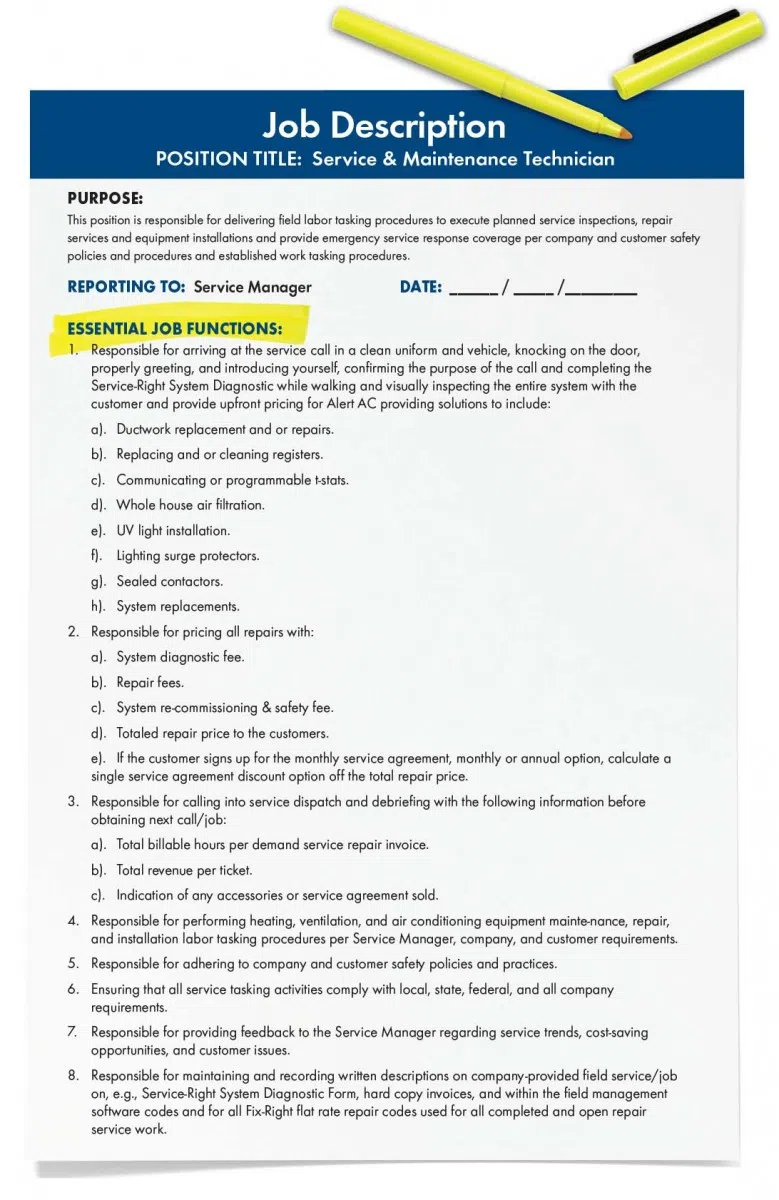Underpricing your repairs is hurtful to you, but it is also hurtful to your company and its people. Many contractors will always charge more for their services than you. There will always be contractors out there who charge less than you.

Many contractors think it is all about bidding low even when there is no competition on a no heat or no cool call. Most likely, this is why when we look at the statistics for the average contractor in terms of net profit before taxes, the numbers range from only 2.3% net profit before taxes. This means that 97.7% of all contractors have catastrophic cash flows. We are losing contractors with roughly 85% going out of business within the first five years of starting the company. Our distributor partners say that another 10% goes out of business every year going forward. 1
Get Paid for the 90% of the Value You Bring to the Job
Your repair pricing must be based on the value you bring to the job to be profitable. When a customer pays you for a job, they pay for the work to be completed and your expertise, experience, and work delivery processes and resources. Remember that 90% of any repair success is what you and your work delivery staff bring to the job. Only 10% of a successful repair is the parts you selected to complete the job.
Therefore, they pay for the value you and your people bring to the job, such as:
- Knowledge
- Experience
- Custom skills
- Professionalism
- Work ethic
- Dedication to excellence
- Integrity
- Tools & resources
- Work delivery processes & forms
- Licenses
- 24/7 warranty management
- Safety & liability protection
- Insurance coverage
Getting paid fairly for your expertise, experience, and work delivery resources is the key to profitability sustainability. According to most economics textbooks, our service price rates are determined by supply and demand, just like any other price. We supply technically trained labor, and consumers demand it, creating a market for our trade labor. We recommend that you use this 3-steps process to determine your flat rate per-hourly sell rate.
Step #1 - Determining Your Flat Rate Repair Hourly Truck and Travel Costs
Most contractors use a flat per trip charge for repair work. Some use this method while using zones for different distances from the home office (e.g., 15 miles from office (Zone A) = ½ hour round trip plus truck charge). To calculate the hourly truck and the per-mile fuel and maintenance costs, refer to the model illustration.
The result from this calculator means that for every hour the technician or installer is onsite to a job with a service vehicle, they must charge $36/per hour.

Step #2 - Determining Your Flat Rate Hourly Technician Costs
You want to be able to hire the best available journeyman-level technicians so you can maximize service ticket opportunities. A journeyman is a technician skilled in all aspects of the residential HVAC tradecraft. This person would be considered competent to work in residential HVAC as a fully qualified technician for repairs, system fixes, enhancements, and replacement work.
Your pricing system must enable you to hire the best. Using a labor cost rate lower than a new hire journeyman would require adjusting your price guide to recover the higher technician cost. If you do not change for your higher technician labor cost, you will lose money on every call.
This calculator below is used to derive your unique company and local area technician hourly pricing rate for your upfront flat-rate pricing guide.
This example contractor requires $335 per on-the-jobsite billable hour. The customers do not see this hourly rate since each itemized repair price ranges from a fraction of an hour to multiple hours to complete, and add repair parts with mark-up.
Step #3 - Determining Your Repair Warranty Reserve Costs
A repair warranty reserve is customer protection against unforeseen labor or material defects. Some repairs fail during the warranty period. We use a mark-up on part(s) after local sales tax costs to cover repair call-backs.
Low-cost parts require a higher warranty reserve mark-up to protect you from a call-back deduction coming out from your retained earnings.
The recommended warranty reserve mark-up levels:
Parts Mark-up
$0.00 - $9.99 ................................... X 5.0
$10.00 - $49.99.............................. X 4.0
$50.00 - $99.99 ..............................X 3.0
$100.00 - $199.99.......................... X 2.0
$200.00 - $499.99........................... X 1.7
$499.99 and above........................ X 1.5
NOTE: Even warranty repairs require a mark-up to cover any post-repair call warranty labor and material reserve. When calculating warranty reserve on warranty calls, you should mark up the parts using the above warranty mark-up level. Then remove the actual cost of the parts from the price.

Example Fan Motor & Cap Repair Ticket Costing
To the right is an example client repair ticket for replacing a run capacitor and fan motor pricing using the above best practice pricing method:
- Diagnostic/Service Fee = ½ hour of my labor rate (or capped at 80% of the local market)
- Run Capacitor Replacement = ½ hour replacement, plus cap parts cost after tax paid at the counter of $15.32
- Universal Fan Motor Replacement = 1-hour replacement, plus multi-fit fan motor after sales tax paid at the counter of $110.12
- Start-up Test & Verify per Manu-facturer Startup Spec. = .75 hour
- Total Upfront Repair Price
- Service Agreement Discount Option – 15% off the total ticket if the consumer signs up to a monthly service agreement
Example Fan Motor & Cap Repair Ticket Upfront Pricing
- Diagnostic/Service Charge = (.5-hour X $335/hour = $168) but due to local area market pressures reduced to $99
- Run Capacitor Replacement Price = (.5-hour X $335/hour=$168) + ($15.32 X 4= 61.28) = $229.28
- Universal Fan Motor Replacement Price = (1-hour X $335/hour=$335) + ($110.12 X 2= $220.24) = $555.24
- Recommissioning & Safety Test = (.75-hour x $335/hour) = $251.25
- Total Upfront Repair Price to Customer = $99 Diagnostic/Service Charge+$229.28 Cap +$555.24 Motor +$251.25 = $1,134.77
- Service Agreement Discount Option 15% = ($1,134.77 Total Ticket X .15 Service Agreement Discount Option) = -$170.22
BUSINESS GROWTH NOTE: The 15% discount off the total repair ticket and a monthly service agreement option is proven effective to close 85% of non-service agreement repair customers to a service agreement. Our client contractors find that the higher the repair ticket price, the higher the discount, resulting in the higher service agreement close rate.
Wendell Bedell, President of Grow My HVAC, CEO of the HVACPro Mastering a Thriving HVAC Business podcast show host, and author of the excerpts from his newly published eBook entitled A-Z Book on Residential HVAC Business designed to help you maximize your thriving HVAC service and replacement Business. If you’d like to discuss this or other business concerns, you can reach Wendell at 800-240-2823 or email him at wendell@hvacpropodcast.com.








